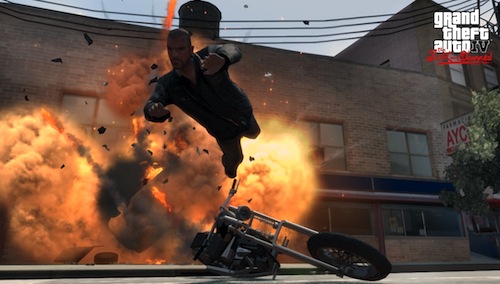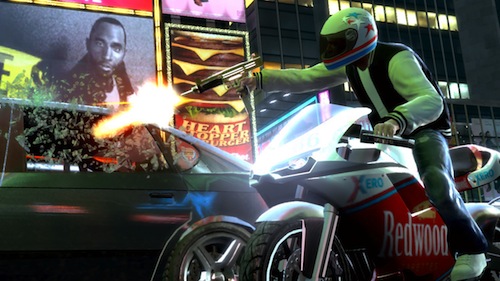
In 2006, Microsoft scored a significant coup for its then-young Xbox 360 by securing the release for Grand Theft Auto (GTA) IV on the same day for its console as for the PlayStation 3 as well as striking a deal for two exclusive downloadable expansion packs for the game.
The two downloadable packs, The Lost & Damned and The Ballad of Gay Tony, are now available on a standalone retail disc called GTA: Episodes from Liberty City, meaning they’re easily available to SA Xbox 360 users who don’t have official access to the Xbox Live service.
Don’t be fooled by the fact that the two episodes are positioned as downloadable expansion packs: there’s more game play here than you’ll find in many big-budget retail releases.
Developer Rockstar hasn’t rushed these packs to market: the first arrived in February, nearly a year after GTA IV, and the second has just been released. The episodes are smaller in scale than the blockbuster GTA IV, but they’re not necessarily worse off for being more focused and intimate experiences.
Liberty City — the ultra-violent, fictional version of New York where GTA IV is set — is a big and diverse place. This gave Rockstar the scope to create two episodes that feel remarkably different from each other and from Niko Bellic’s adventures in GTA IV, though the three narratives do overlap at various points.
The Lost & Damned mostly plays out in Liberty City’s grubbier neighbourhoods and grimier industrial areas, while much of Gay Tony takes place in Alqonquin, the game’s glitzy counterpart to Manhattan. Though the city hasn’t changed since GTA IV, the episodes throw new in-game radio stations, cars, weapons and other content into the mix.
In the Lost & Damned, the player takes the role of Johnny — a high-ranking member of a notorious biker gang trying to hold his world together as his crew comes under fire from rival gangs and corrupt cops. He also has to deal with internal divisions as he tries to rein in his out-of-control boss, Billy.
The playable character in The Ballad of Gay Tony isn’t Tony Prince, but his bodyguard, business partner and friend, the Dominican immigrant Luis Lopez. As Lopez, the player tries to save the flamboyant nightclub owner from the underworld figures he borrowed money from and from his own drug habits and bad relationships.
The core of the episodes is still the same mixture of free-roaming driving and shooting that underpins every GTA game, but the formula is tweaked for the characters you play in the episodes. Many of Johnny’s missions are built around riding motorcycles; he also has access to mini-games and side missions like arm-wrestling, high-low card betting and motorbike races.

Luis, meanwhile, spends much of his time parachuting from helicopters, managing nightclubs, pulling off smooth moves on the dance floor and taking part in cage fights. There’s enough variety here to keep most GTA fans happy.
The writing and voice acting in the episodes is a step up from GTA IV, which was in turn a dramatic improvement on its predecessors. Though nowhere near the narrative sophistication of the Scorsese, De Palma and Tarantino films that influenced it, the GTA universe manages to evoke a surprising amount of sympathy for its amiable sociopaths and marginalised losers.
Like all GTA games, Episodes is best avoided by the easily offended and kept well away from the children. The age restriction is there for a reason — there’s plenty of bad language, violence, and references to sex and drugs. At times, these elements are justifiable in context; in other cases, they appear to be there out of a juvenile need to stir controversy.
The time that has passed since its release hasn’t been kind to GTA IV’s technology. The game’s engine is looking dated, with occasional slowdowns when there’s a lot happening on-screen and a number of graphical glitches. That said, the franchise has never been noted for the beauty of its visuals and the graphics do a decent enough job of bringing the clockwork city to life.
The game-play is as solid as ever, though the controls on foot and in vehicles feel a little clumsy compared to many recent open-world games. As with previous GTA games, the difficulty of the main story missions is inconsistent and there are a few where one can’t escape the feeling that success comes down to perseverance or luck rather than skill.
That said, checkpoints are generous enough to ensure that the frustration level is kept to a minimum. The mission design in both episodes is some of the best seen in the franchise to date, with many moments as inspired as the epic Heat-influenced bank robbery in GTA IV. Some of the throwaway mini-games, like the golfing range and video arcade, are surprisingly entertaining time-wasters.
Each episode will keep most players busy for between eight and 15 hours, depending on how much time they spend on mini-games, side missions and the new multiplayer content. Priced R250 or so below most retail games, GTA: Episodes From Liberty City is a bargain at the price. — Lance Harris, TechCentral




